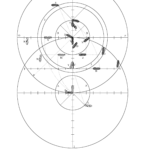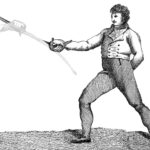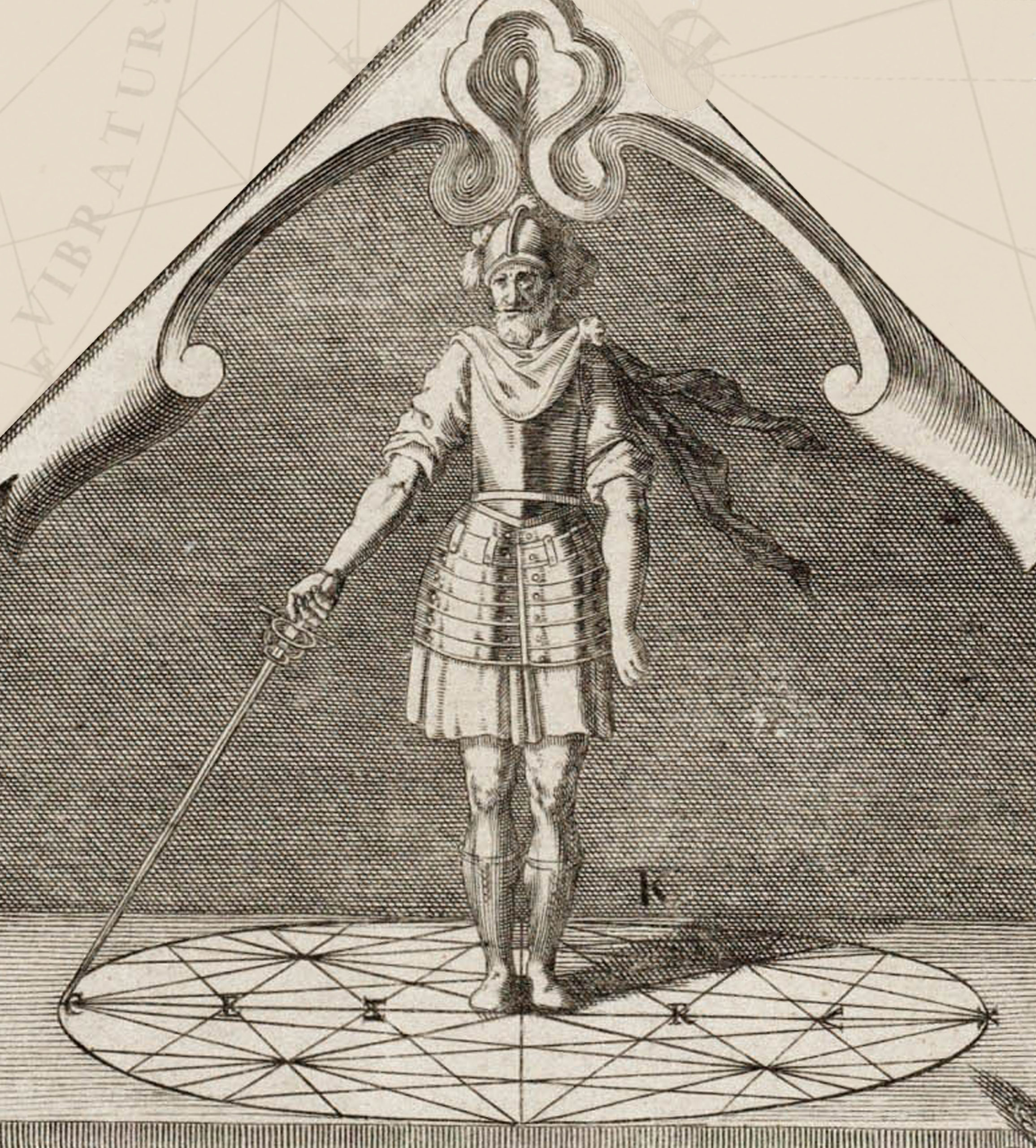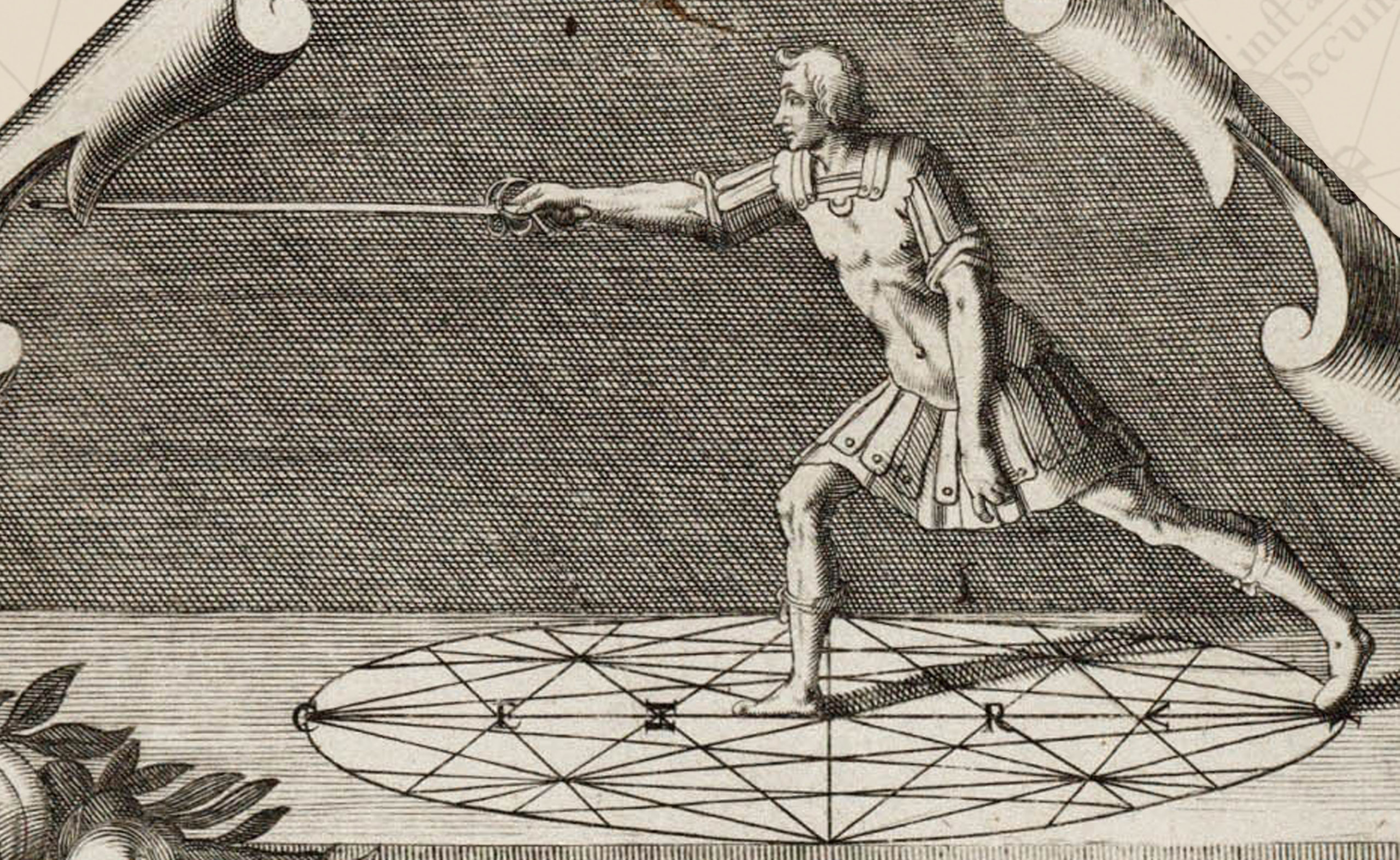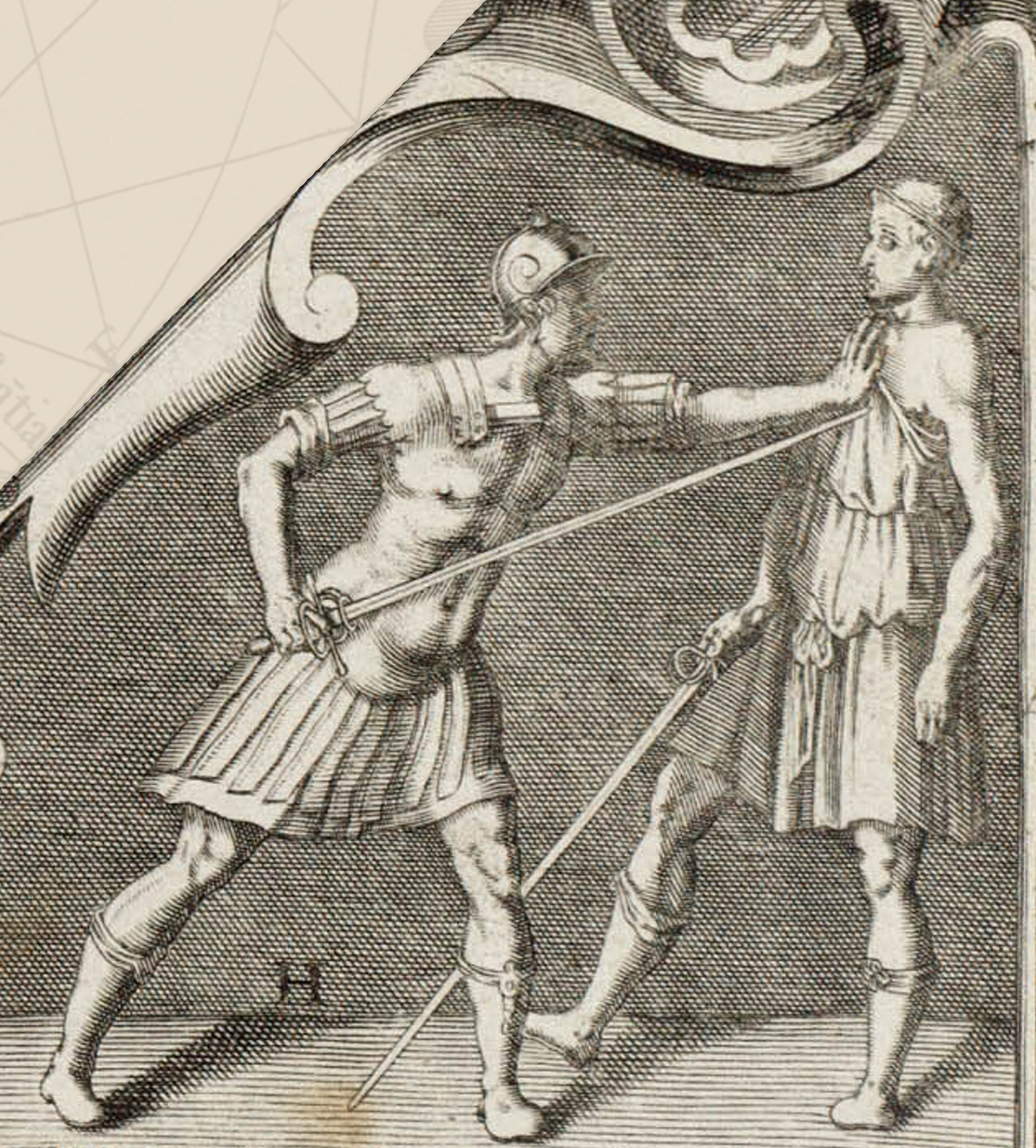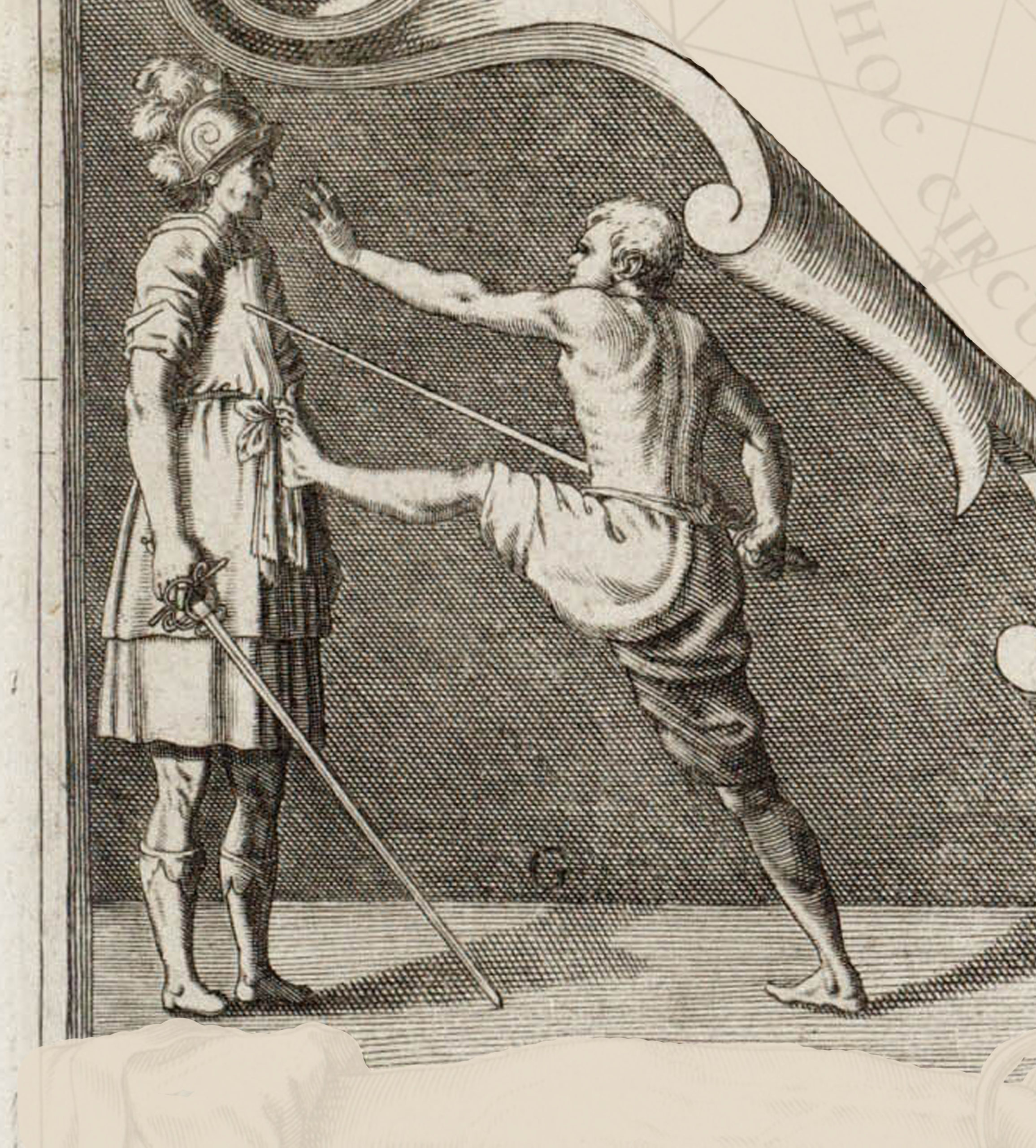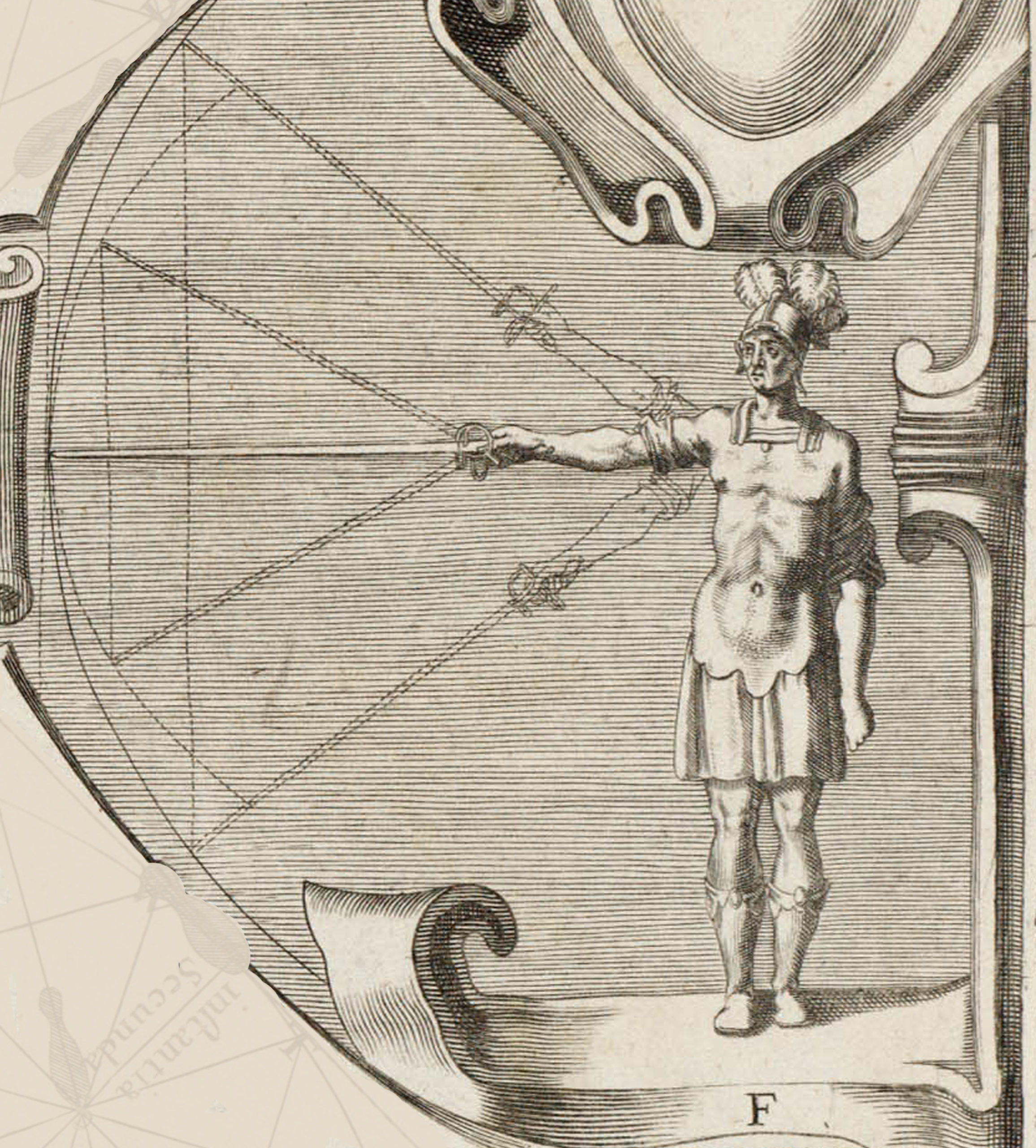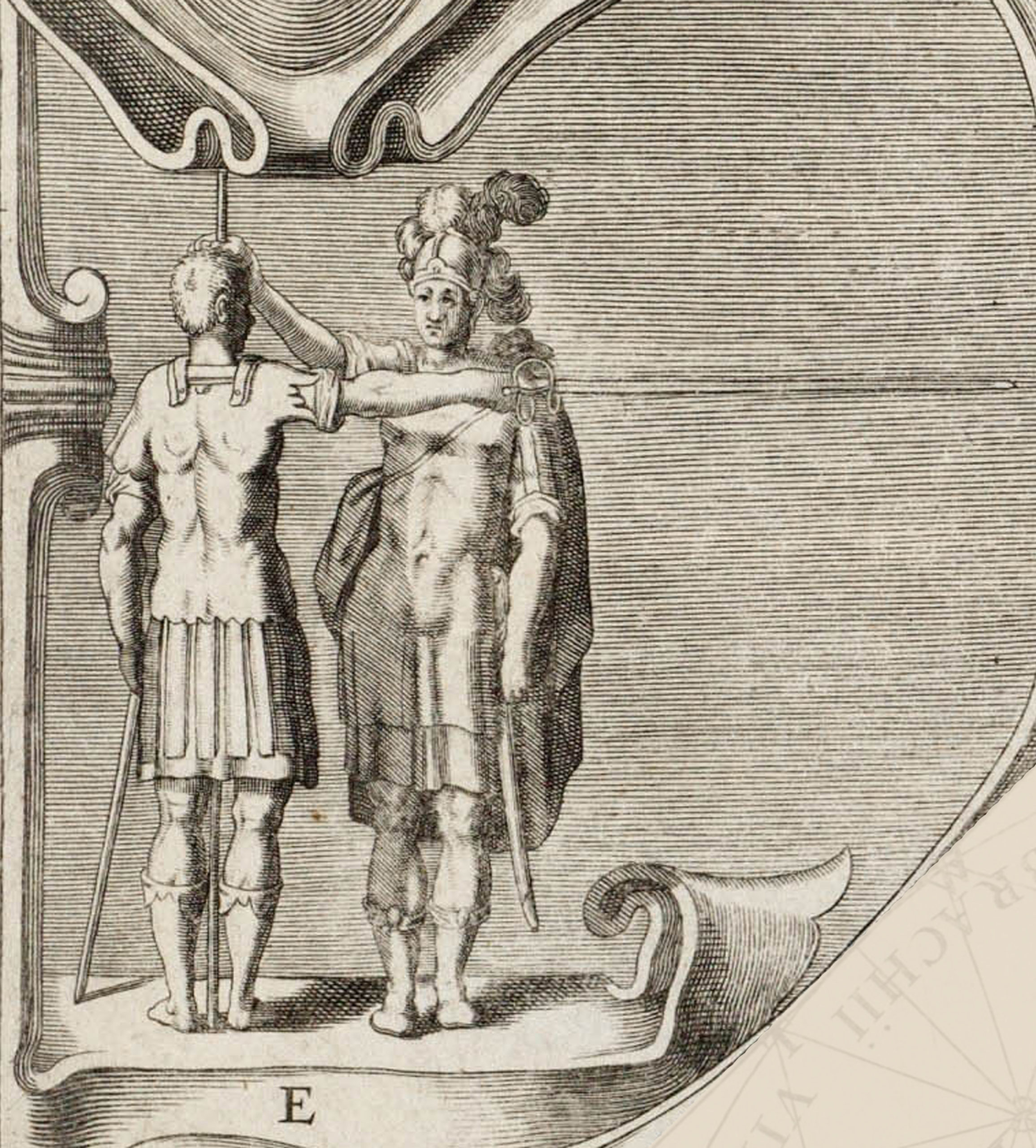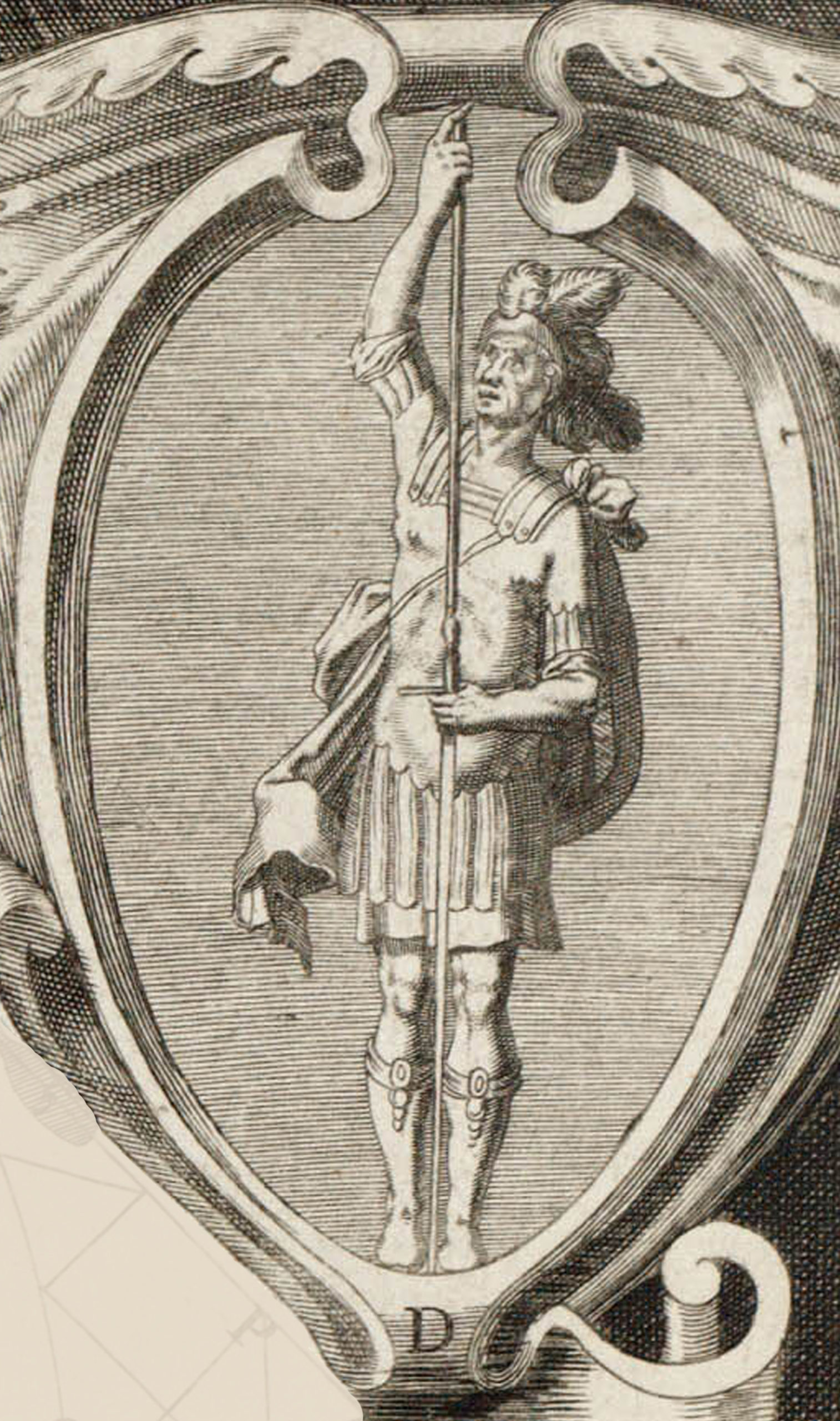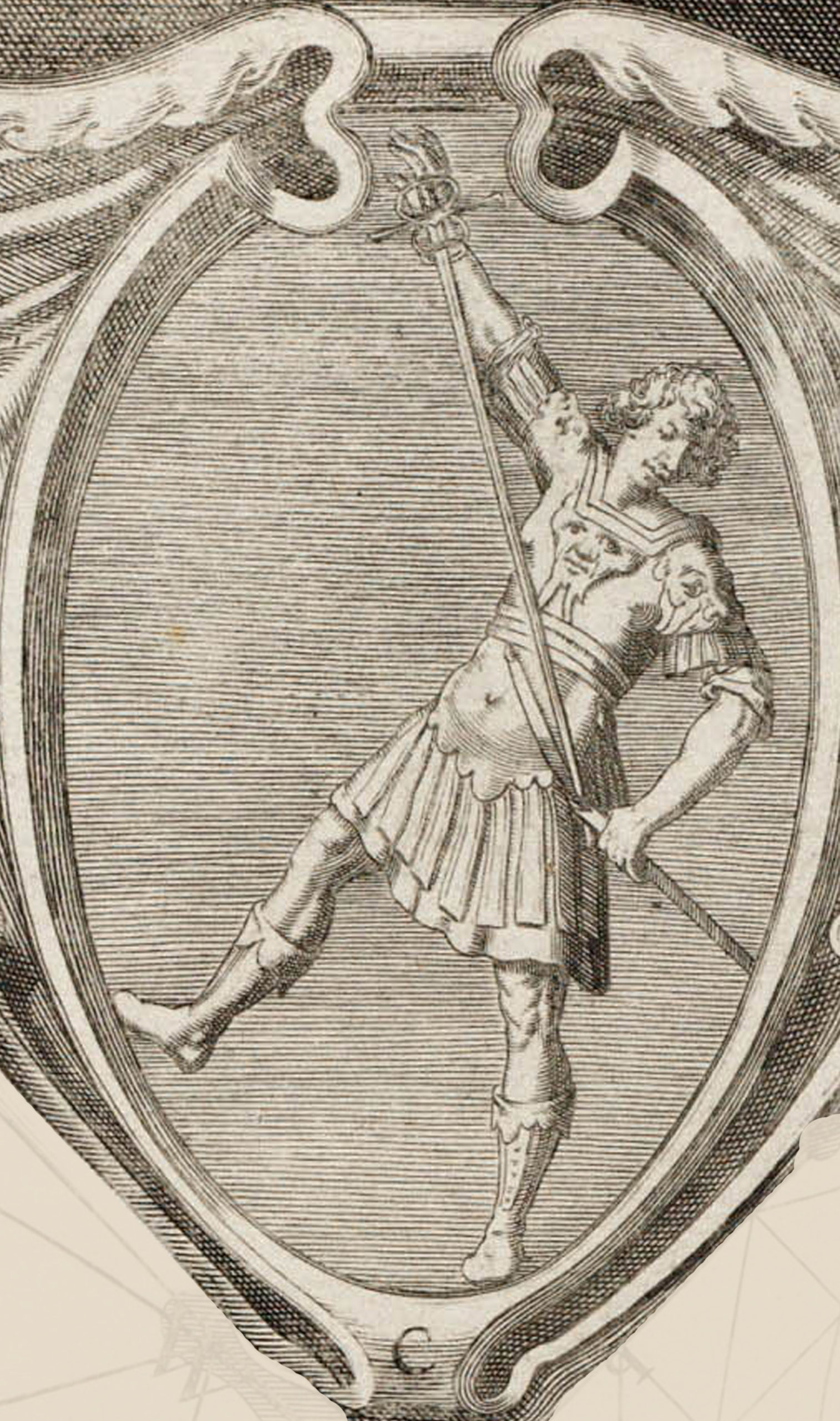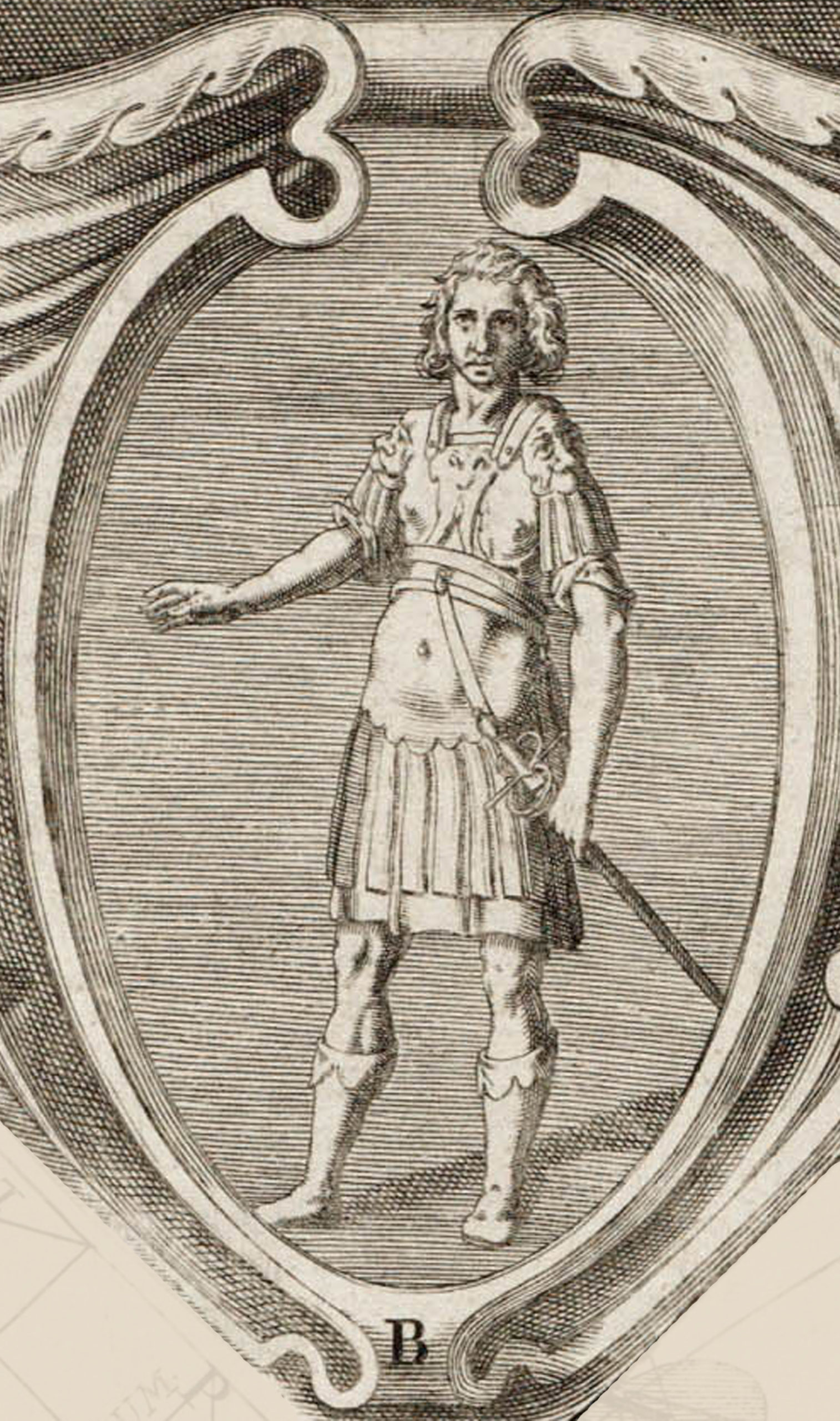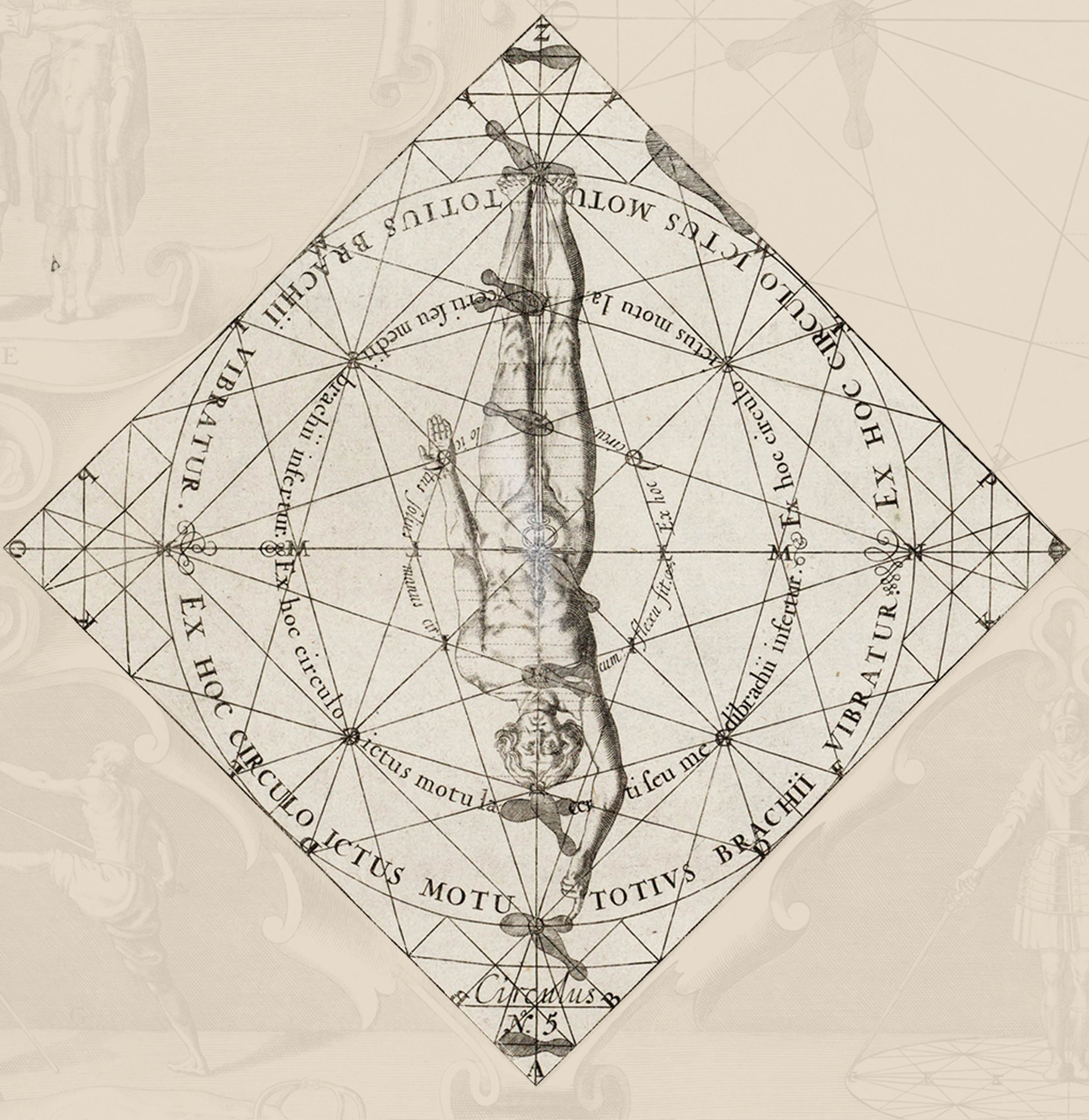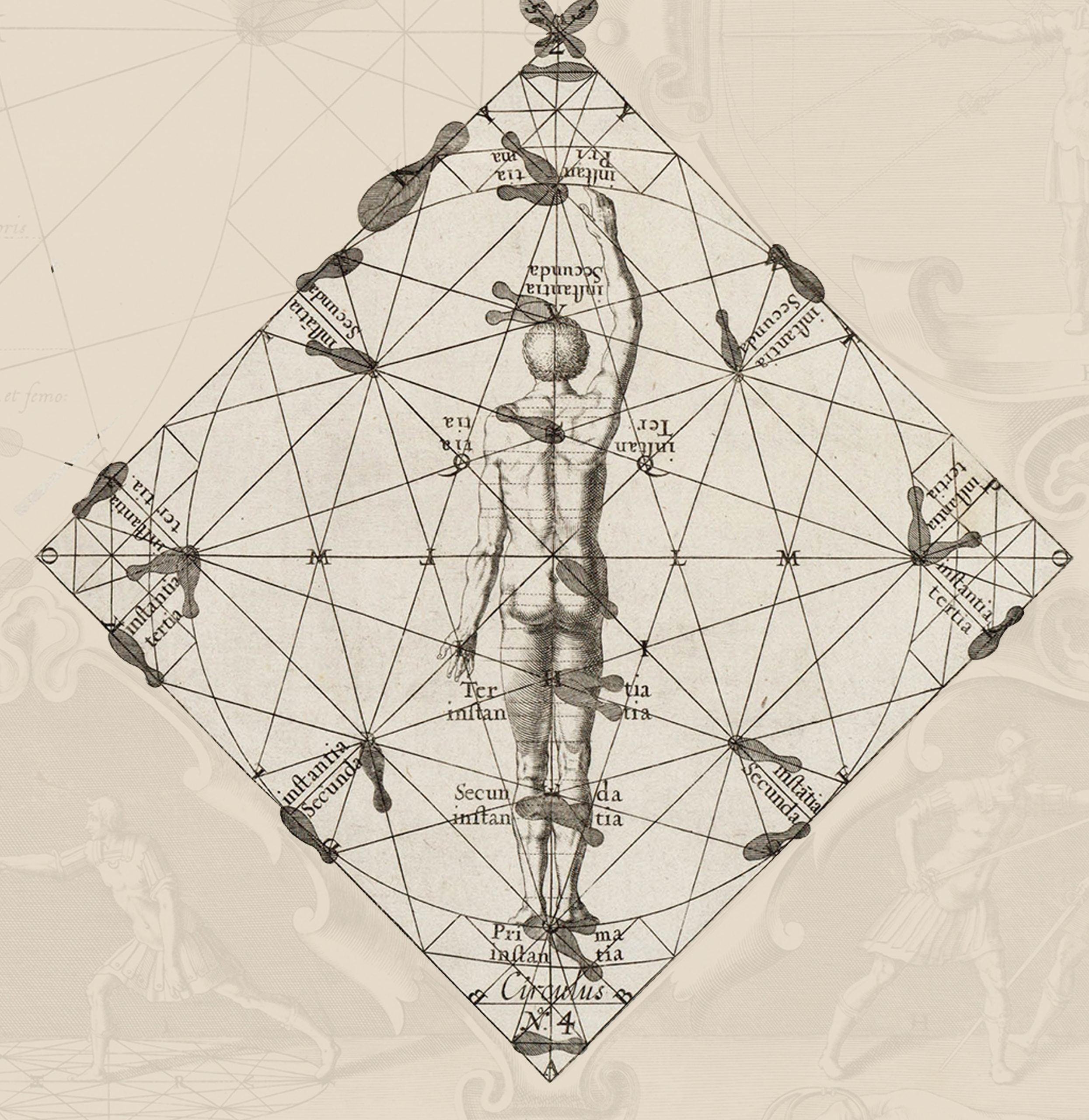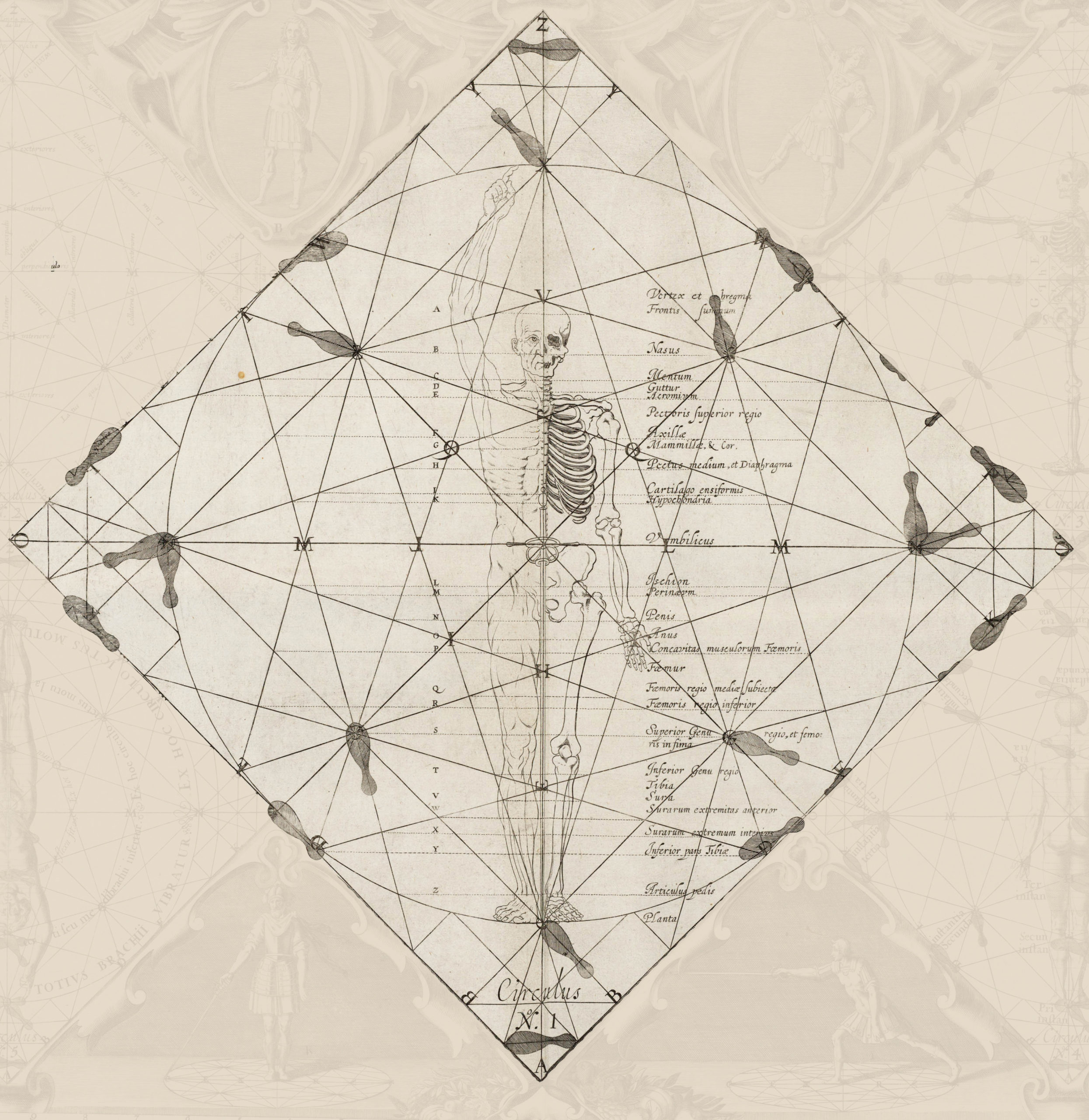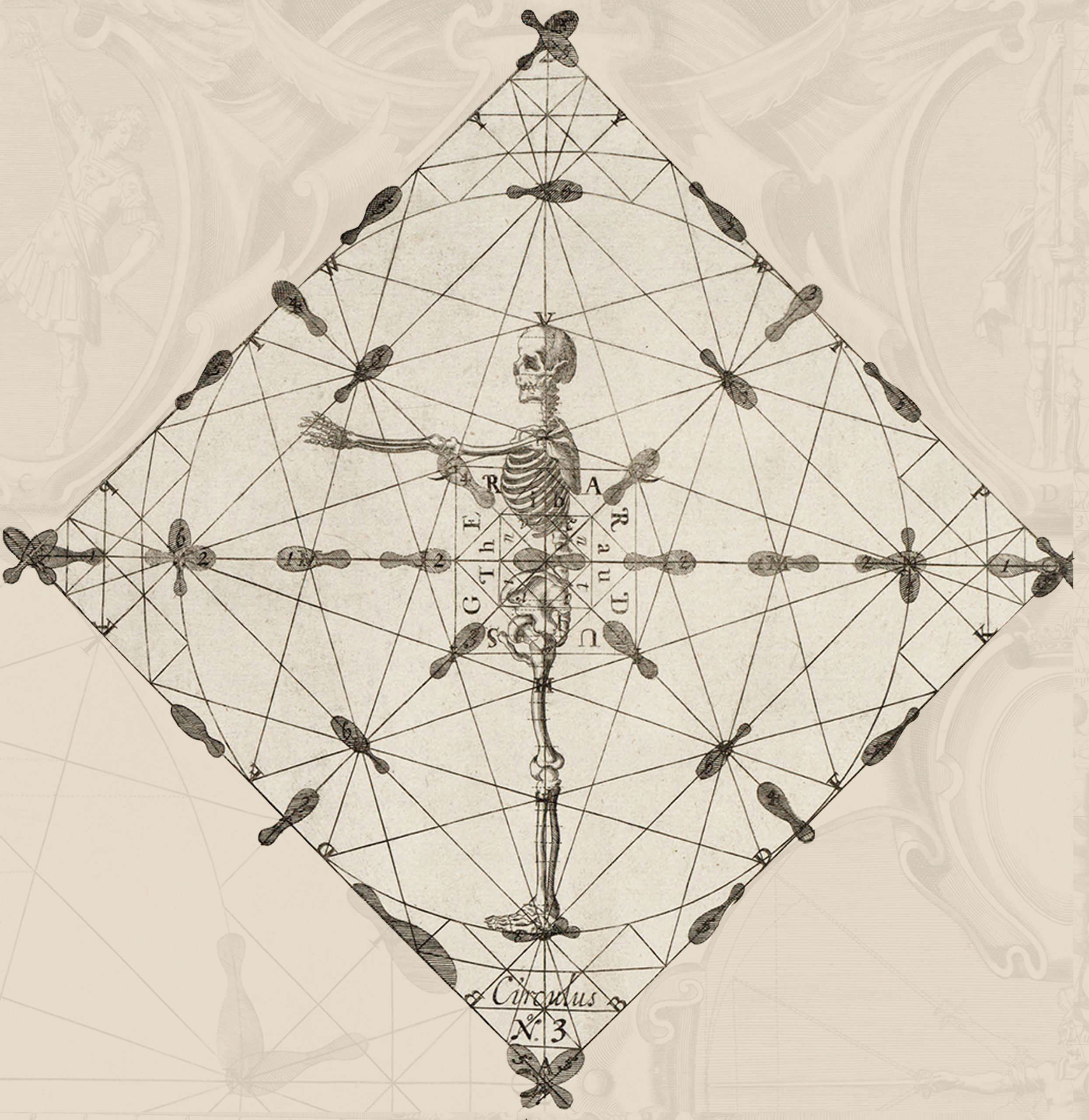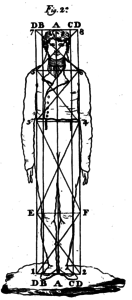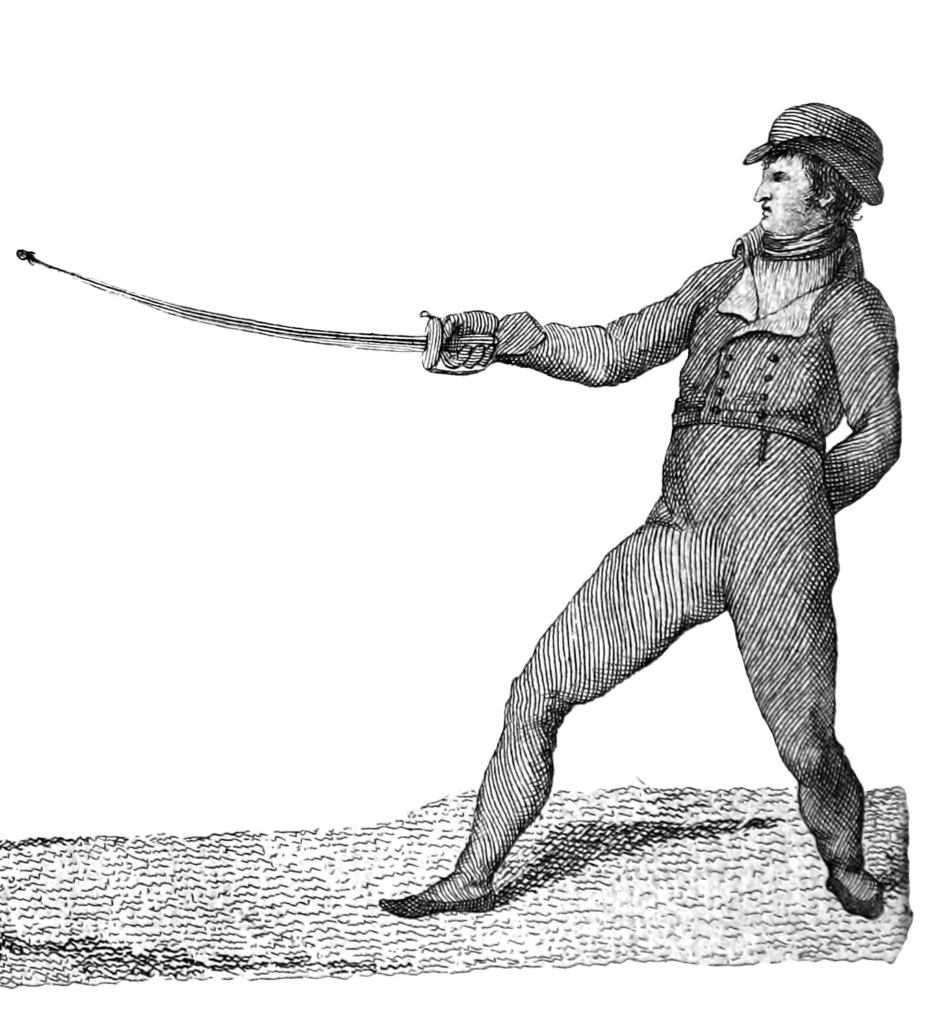189. Being that the main object of this treatise is to give sufficient rules for the conservation of life, and danger being evident in the combat with edged weapons, it is necessary to be provided with resources to accommodate to any event. It is undoubted that there are almost always found obstacles by reason of the place in which they are offered, since their inequality in some times, and other limitations, present difficulties that are out of our hands to avoid. Because as the battles force us to a continual variation of place, it is necessary to be able to adapt the advances, withdrawals, jumps, off line movements, etc. Not only because of the terrain, but also due to the operations of the enemy. Therefore, I will give a number of precepts that, by virtue of them, you can take advantage of the battle, even of the same obstacles which would be insurmountable to a less skillful competitor.
190. The battles admit two principal divisions. These are offensive battles, and defensive battles. That is, if you understand a battle to mean the meeting of two or three shots or that of two or three removals, because if you want to take this name more broadly, all will be mixed, that is to say defensive and offensive. But, in strict educational rigor, it does not seem conducive to me to give such a broad significance to this word.
Rule 1
191. When you start a battle attacking, or offensive, observe if the enemy removes to a firm foot, balance, withdrawal, or withdrawal and balance. If he removes to firm foot on the first thrust, there is no need on the second shot for any stepping operation, advance, etc, since it is kept at the same distance that was sought for the first.
Rule 2
192. If he removes the first thrust that was thrown with only a deep step, by balancing, he has deviated from the reach by one foot and, in this case, without recovering, walk the left foot forward one third, with which operation you can accompany the second shot with a new step and achieve in this way the reach that was diminished by the contrary by virtue of his balance.
Rule 3
193. If the contrary removes by withdrawing in a Spanish step, he has deviated two and a half feet and, in this case, walk at him in this way: quickly join the left foot to the right, placing it half a third before reaching this heel, from which step deeply again. You will have advanced the precise amount for the reach of the second wound.
Rule 4
194. When the enemy, to remove the first blow, not only makes a Spanish retreat, but balances back at the same time on the withdrawal, they will have deviated three and a half feet, and so it is necessary to walk the left foot to place your heel in line with the right ankle, from here, stepping deeply, recover in the second shot all the ground that the adversary attempted to lose with their operation.
Frias literally says to “place your heel in line with the throat of the right foot.” I have interpreted “throat of the… foot” as “ankle.”
Rule 5
195. If the enemy accompanies their first removal with an Italian retreat, but it does not have a constant dimension, neither can we invariably measure the march that should be done. Therefore, pay attention to the amount that their right foot passes behind their left, and make the left of the attacker move the same relative to their right. And, if he adds the balance to the rear to this retreat, it will increase that of the advance a third more. With this, you will meet in the defensive measure and the deep step attached to this advance will provide what is needed for the achievement of the second blow.
Note
196. Let it be well understood that the rules given for the execution of the second shot are adaptable to the third, fourth, etc since, without turning to another end than to preserve the just distance for the attempted offense, they are equally necessary in all the shots. Therefore, if in the second the one that removes balances, apply the second rule. If they withdraw in the Spanish step, the third, and so on with the others.
197. I have just insinuated that all the disorders that can be made by the one that removes disproportionately increase the distance that must be maintained, when need has not yet put it in such straits. It now remains to say the same about the one who attacks. This can be done with a short step that does not provide the reach for the intended wound, in which case there is no need to make the removal. You can also exceed, with too large a step or an advance. In this case, it is necessary to attend to the kind of battle that it is appropriate to make with respect to the enemy before you. If the battle is to be made only of defense, it is necessary to retire in proportion to the other’s advance as said. If the enemy advances with every shot they execute, it is necessary to withdraw with each removal. But, if the distance is provided to execute two or more shots without closing, the withdrawal will be made in the second or third or, narrowing more, to conclude.
198. The withdrawals must be chosen when it is presumed that the opponent is presumed to be able to stop himself in light of this generosity. But, if it is known that this action can make him more proud, choose the near measure so that along with the weapon you may also remove the recklessness of his daring. If it is important that the battle is offensive, without wasting a moment, press him hard from the first removal to execute one of many offenses proper to this distance, which I will put forward individually. The distance of the near measure is quite clarified in paragraphs 41 and 42, in which attention I will only say that it is in proportion to the enemy’s advance. It is either withdrawn or not by justly choosing this place. This will be most clearly exhibited in its place.
199. Battles are not endless and, having given rules to start them, I must give them to conclude. When you attempt an assault, it is with a premeditation of the shots to be executed according to what may result from the first removal of the contrary. However, be it two, three, or more, those to be done must lead, inevitably, to the last one, which must be accompanied, successively by the recovery. This will be subject to the disposition offered by the enemy since he can do his last removal on firm feet, balance, withdrawal, withdrawal and balance, or advance. For each of these variations, a different rule must be applied, which I will speak of in the same order as I have enumerated.
Rule 6
200. If the enemy makes the last removal to firm foot, the attackers right foot will return back one half or a third, which was the distance it advanced for the execution of the shot or shots, not forgetting the offensive stance which corresponds to the defensive which the contrary is in.
Rule 7
201. If the opponent has accompanied their last removal with balancing, by virtue of this, they will have taken the offensive stance, So it is necessary to recover to the defensive, and you will succeed in this intent if simultaneous to the execution, you withdraw the right foot to the point where it was before, staying balanced forward at the end, which will place both combatants in the defensive measure.
Rule 8
202. When the final removal is done withdrawing in the Spanish step, the attacker should not recover, but advance the left foot two and a half thirds forward to give placement for the advance the right foot two thirds, making the defensive measure, always choosing the stance opposite from that of your adversary.
Rule 9
203. If, to the above mentioned retreat, he adds to the removal a balance to the rear, do what is said in the previous rule, with the only difference being that of taking the defensive stance.
Rule 10
204. The withdrawal of the final removal can also be in the Italian step. Also, as this admits various dimensions, it is necessary to warn that, if it is done by touching the tip of the right foot to the heel of the left, you must advance on the one that withdraws with your left to the ankle of your right, but if the withdrawal is larger in proportion to the advance, conclude the stated advance by taking the defensive stance, on not the one for attacking.
Rule 11
205. On any removal, the contrary can advance a third. In this case, it is necessary to conclude it, or promptly retire the right foot one and a half thirds, and one with the left, to take the stance opposite that of the enemy. Noting that, in this case, you can inflict a blow with the edge at the same time to any of the points that are uncovered. If the advance is more or less than that, the withdrawal will be proportional to it, always seeking the defensive measure and the opposite stance.
Notes on the Removals for the General Rules
206. In order to generalize the operations of any exercise, it is necessary to premeditate the changes to which it is susceptible. I have done this with regard to the steps, withdrawals, and recoveries. I must now do so with respect to the removals, because the first ones are only the of the inferior plane for distances and, as the fighter must always attend to all of the operations that are executed in the fight, it is necessary to give competent instruction for all, and each of the planes and causes that make up the handling of weapons.My principal intent has been to take care to increase clarity, that from the smoke of vain erudition, so there are many divisions, which may seem excessive or trivially neat. But, whatever judgement the immature critics and parroting masses make of my writing, I will view with the indifference I have acquired through the continuous treatment of subjects characteristically critical, although not very much informed in the matters chosen to entertain their insocial custom.
207. The variations of the removals can be inadvertent or intentional but, as you want them to be, the effect is always the same, and so the rules that are given with this regard, whether the enemy is skillful, ignorant, negligent, or prudent, should serve as government to avoid any perplexity in their application. The removals generally vary in five ways, which are, closed, fixed (that is to say, in their rightful place), open, high, or low. Each of these lends a particular disposition and that is the subject of the rules which I will put in order.
208. One of the operations which gives rise to variation in the removals is leaving the line of the diameter, but this is not carried out in consideration of itself alone, if not also attending to the larger or smaller movements of which the direction of the offense must consist. So, in the same rules as the removals, it is necessary to place those of movements and to gather for this cause, the consideration of all of the planes, that they will remain together, with all possible clarity.
Rule 12
209. The first variation that will be noted is a closed remove. This name is given to those which consist of movements so constrained that the strong part of the removing weapon barely covers the point that it is trying to guard and that the point does not leave the verticals of the attacker, whose operation is the daughter of an equally strong and dexterous arm. Therefore, it is necessary after this kind of removal to leave the line of the diameter and execute a second blow. For example, suppose that the battle begins by throwing a thrust of fourth, and that it this was repaired with a removal of the nature I have just described. To repeat a thrust of third, it will be necessary to leave the line of the diameter to the left side by a third, with the right foot, following immediately with the left to the corresponding distance as demarcated in Plate 2, Letters V-V, not omitting the motion of square and opposition of the arm and sabre. If it is a consequence of the removal of fourth, suppose you try, instead of a thrust of third, executing a diagonal reverse to the face, formed by the point or a half reverse from below the guard (they both consist of an equally long movement). The departure from the line will be two feet, see the letters X-X from the stated plate. If the shot that is executed is of a larger movement that those expressed, the departure from the line must be greater.
Rule 13
210. When the contrary repairs the first blow with a regular removal, you can attack with the second to any of the points they uncover for the thrust, with only the balance, the movement of the planes, and opposition of the arm and weapon. But, if you try to achieve any cutting wounds, leave the the line to the side opposite the point of the contrary’s weapon by one third. However, if it is one of those that requires a very large movement, go out by more than a third.
Rule 14
211. The first shot being repaired with an open removal, that is to say, with a parry in which both the guard and the point go out from the vertical, exceeding the given rule, you can attack to any of the uncovered points without needing to leave the line and without the motion of planes. But, if the opening of the removal consists only of a deviation of the point, leaving the guard in its due, proper place, do not omit the motion of the planes.
212. It was said in the treatment of the removals that they are divided into upper and lower. Those of third and fourth are left for the first division, and those of fifth and sixth for the second. Each one of these can be high or low with respect to the place it should regularly have. Consequently, the rules should be applied with respect to these variations.
Rule 15
213. If the first shot was repaired by a removal of third or fourth, such that the enemy who does it leaves the guard in place, raising the point of their weapon, it is necessary not to view this action with contempt, because the hand occupies the place that it must, and that being what determines the top and bottom of these removals, this should be considered as regular and, in this attention, take what was said in rule 13 for the execution of the second shot.
Rule 16
214. But if in what is said, the hand is raised during the removal, leaving the point inside the planes of the attacker, you should lower the point on the side it is on (and from the height at which the removal was taken), and apply your strong to the weak of the enemy’s weapon, directing the second offense below it with only a motion of the planes, with weapons joined if the blow is a thrust or, if it is a cut, you will separate from the line of the diameter by one third on the side of the execution.
Rule 17
215. You can also, in these removals, raise the arm and point. In this case, without needing to leave the line of the diameter, execute the second offense below, without joining the weapons.
Rule 18
216. When the contrary repairs a wound with third or fourth, lower the hand and not the point in order to verify one of these two cases. Lowering so much that their removal is no longer effective, by opposing weak to strong, or lowering it a little that it has an effect. In the first case, there is no need for the second offense, achieve the first and the second is observed in rule 13.
Rule 19
217. If in these removals the point is lowered and not the hand, or the other way around, the effect is the same, and the second offense is inflicted without leaving the line, with only opposition of the planes, in consideration of the greater security. Note that, although in this removal the point of the enemy is within your own planes, that is to say, directed to the body, it does not change the given rule, by virtue that it will have less reach by forming a sharp angle with the arm and weapon and attacker will have formed a straight line.
Rule 20
218. Having just indicated the variations and rules that support the high removals it remains to treat on the lower ones. When the contrary has repaired a blow with fifth or sixth, raising the arm more than usual,and with the point of the sabre outside the supreme plane, inflict the second offense to the points presented without leaving the line and taking your guard to the height of the supreme plane.
Rule 21
219. It will sometimes happen that raising the guard in these removals, the point stays inside the planes (or in the direction of the attacker’s body). In this case, take the weak of the contrary weapon with the strong of your own to the side of the offense and at the height that is the median of that, inflict the second wound of the point with opposition of the planes, without leaving the line. Note that in those cases where the weapon is prevented from aggregation in the offense, this is on the assumption that it must be a thrust, because edge blows with such aggregation are impractical. You should only take them from good opposition and departure from the line.
Rule 22
220. When, with these removals, the thrust is avoided, they can be lower than regular, and its proportion will uncover more or less, only the surface of the head, or the superior plane. In the first case, attack with an edge blow to the head or arm. In the second, add to this attack with blows of the point to the chest above their guard or arm. In either case, there is no need to leave the line, since all of the necessary security is achieved with the opposition of the planes.
221. Among the many shots that make up the offensive part of the sabre, there are some that I call uncovered. They are divided into superior and inferior. I give the name of superior uncovered shots to those that are executed above the guard, and inferior to those below. Both lack opposition of the weapon and this supplements the body. The inferiors are the counter edge below to the wrist, diagonal or horizontal to the abdomen and the cut to the leg.
Rule 23
222. All of the superior uncovered shots are executed leaving the line of the diameter by two feet, moving away from the enemy’s sabre when you go to the trunk and, and when outside of it, that is to say, to the arm, will be executed in the time of the recovery or leaping back. But, for those uncovered below, it would be better to make a Spanish jump back at the time of your execution, even if they can be executed with only a recovery.

